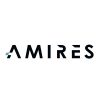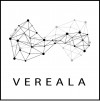Billons of euros has been invested by both the private and public sector in nanotechnology research to help advance this key enabling technology. Several large-scale collaborative projects have investigated the environmental and human health aspects of nanomaterials. There has been a clear gap on the reuse of data between various projects and an even larger chasm between the data produced in projects and its use by industry for safety and regulatory use. Linked with this is the need for faster, more efficient materials testing, especially in the area of emerging advanced materials and the need to comply with regulatory demands whilst also reducing the number of animals used to test chemicals.
The NanoReg2 project was one of the largest investments made in nanosafety research by the European Commission. It brought together 42 partners to work on the challenge of coupling safe-by-design (SbD) and grouping strategies with the regulatory requirements for nanomaterials. The latest publication to emerge from this large-scale project has been published in Nature Nanotechnology and summarises the challenges and provides recommendations for the efficient use of nanosafety data in line with the established FAIR (Findable, Accessible, Interoperable, and Reusable) principles.
“Making data FAIR is vital to ensure the sustainable reuse of publicly funded research and to help ensure that it can be of use to industry”, says lead author Dr Nina Jeliazkova of Ideaconsult Ltd. “FAIR principles are aspirational and we hope that this article will help others to understand why it is crucial for nanosafety data to be fair, but also to see a practical approach that was taken to make large sets of data available following FAIR principles.”
“We have managed to bring together a lot of know-how in this article”, says co-author Dr Penny Nymark of the Swedish Karolinska Institutet. “We show how data needs to be gathered, stored, and re-used by using the data from NanoReg2. This project has brought together data from a number of other EU funded projects and has created one of the largest nanosafety data sets in the world”.
Alongside the article, NanoReg2 project data has also been made available under Creative Common Licence and is available now for other to use.
About NanoReg2
NanoReg2 was funded under the European Union’s Horizon Research and Innovation programme, Grant Agreement No. 646221. The project ran between 2015 — 2019 under the coordination of INERIS and brought together 42 partners from 15 countries to work on this €10m project. The project worked to help address the challenge of coupling safe-by-design (SbD) and grouping strategies with the regulatory processes for nanomaterials. Data from NanoReg2 has been made available to subsequent nanosafety and nano risk governance projects and the grouping and SbD methodologies have been published in several articles and have been developed further in ongoing Horizon 2020 projects such as Gracious and Gov4Nano.
Further information
For media enquiries contact the Nanotechnology Industries Association’s Communications and Project Officer Nikolina Latković via nikolina.latkovic@nanotechia.org



















